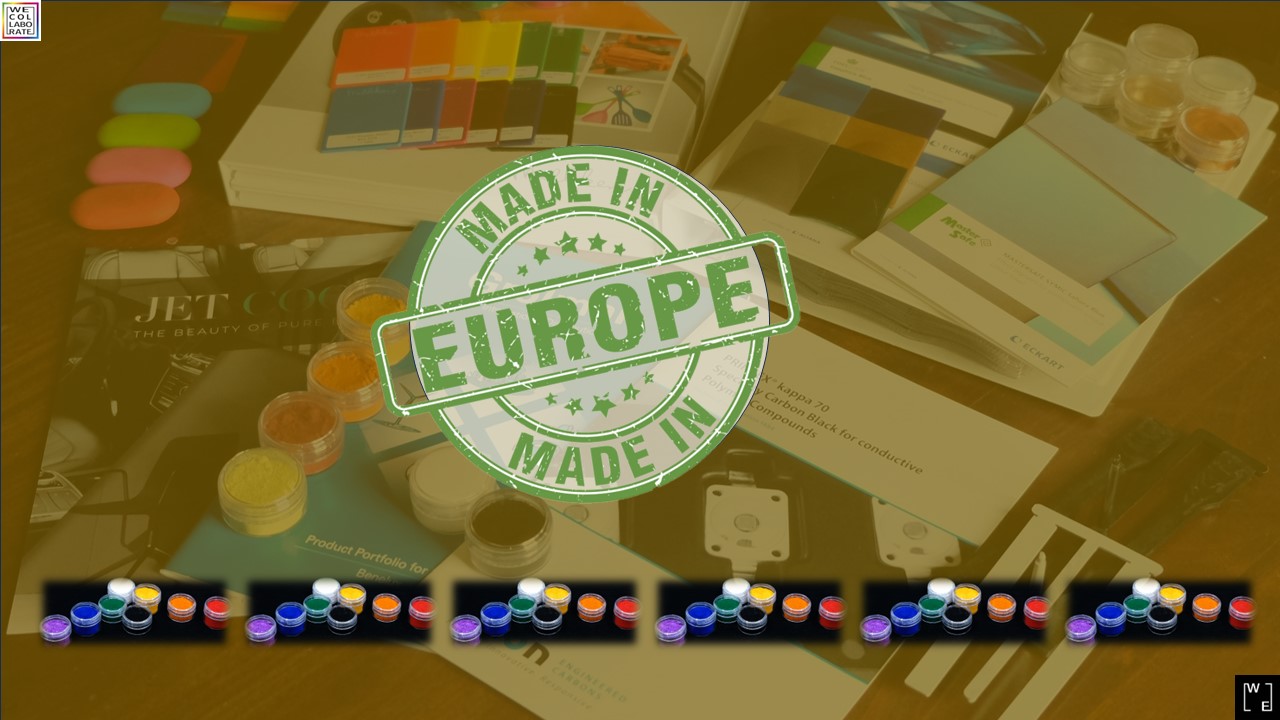Made in EU!

In 2007, the EU proposed for the first time to introduce a “Made in EU” label for food products in order to distinguish the EU's own products. This was criticised from all sides, mainly because it would be too one-sided. It was more important to state where it was produced, where the raw materials actually came from – although already based on the ecological idea that long transport distances were not good for the environment - and how much fat, sugar and salt it contains. Incidentally, a similar idea was put forward in 2004, but dismissed by the UK, Germany and the Netherlands because of the costs (!) that this labeling would cause. Trade was the main driver for the EU, usually resulting in production in low-income countries.
The same goes for pigments and dyes. From the 1970s, most mines, the basis for inorganic pigments, among other things, were closed, Europe obtained its metals from China, the US, Peru, Chile and Brazil. And the production of (semi-finished) pigments and dyes were moved to low-income countries, with the additional advantage that the production of organic pigments and dyes do not particularly include the nicest raw materials, such as Naphthol and Phenol. With the increasing environmental regulations in the EU, and therefore extra high costs, many manufacturers opted for, in particular, China and in recent years also India.
Today, more than 80% of all raw materials and semi-finished products for pigments and dyes are supplied by countries outside the EU. Incidentally, the same applies to medicines, among other things (your Ibuprofen and paracetamol have been coming from India for years... not for nothing called the “Pharmacist of the world”).
But the world has changed!
The Covid pandemic has painfully shown how dependent the EU is on external regions and China in particular. With the terrible war in Ukraine awareness all the more has grown that the EU must become self-reliant, not least in the area of ??energy.
And with the changing relations between China and the Western world, with America at the forefront, the new Silk Road, but also China's growing awareness of the need for a sustainable future, the EU must respond rapidly to this in order to maintain the economic and sustainable prosperity in their own region.
Now, you often hear that the EU is slow and too little is accomplished. I am, at the present, only partly agreeing with those people who say that. Because something is also changing in Europe!
Europe's response to both the pandemic and the war in Ukraine was and is a collective and (largely) united Europe, with a growing understanding and confidence in the region's own capacity and economic and social importance in the world. Examples such as ASML (Dutch Chip company), the rules imposed by the European Commission on social media such as Facebook and Twitter and perhaps even the process during and after the UK's Brexit and the changed relationship with the US have reinforced this. Europe is increasingly sailing its own course, focused on its own region.
And this insight seems to translate into concrete plans and practical actions; and not only in the field of energy!
But, as often is the case in the EU, it does not happen overnight....the EU is not the US or China, where a central government dictates policy for the entire region or country. In the EU, there are 27 member states that all need to be convinced of the course to follow.
And so it will take some time for the average EU citizen to see what is going on.
New mines will come and existing mines will be expanded or optimised - the first as early as 2024 and several more in 2028.
One of the goals is to mine by 2030 at the latest - only 7 years left! –10% of all rare earth metals in the EU region (plus 15% from reuse) and 40% of the various “substances” are to be processed in factories in Europe!
Which mines they are, which substances are involved and which factories will be restarted or built or expanded as a result, remains to be seen, but the impact will be great.
Because mining and possible factories for semi-finished products are not only important for the energy transition, but also brings "by-products" that can be used for pigments and dyes (and also medication, by the way!).
Europe is currently the third largest economy in the world and will not become the largest producer of raw material and semi-finished products; America (including the US, Peru, Chile, Brazil), Africa (including the Congo) and Asia (including China, India, South Korea) remain very important.
But it will change the geopolitical balance in the world.
And who knows, in 10 years’ time you might find a product in China with the label “Made in EU”!
Feel free to contact us or request a quotation




